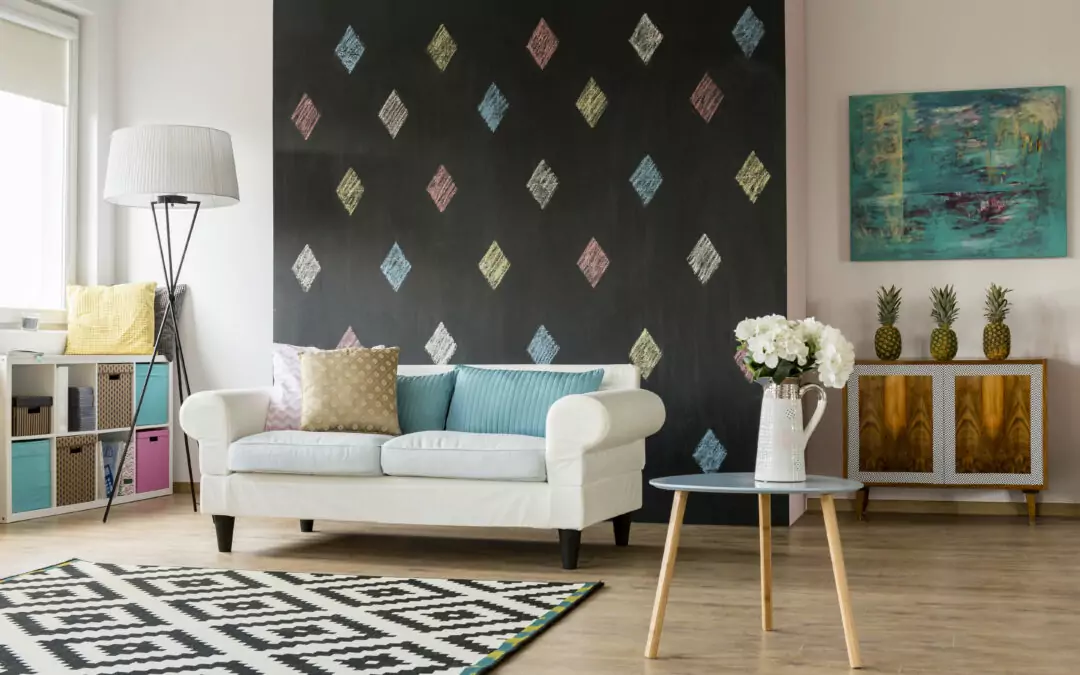Have you heard of chalkboard paint? It’s been around for a while, but has suddenly become really, really popular. It can completely transform surfaces into cool, writable spaces that look just like traditional chalkboards. The applications are huge, whether you’re looking for a fun accent wall for a kid’s room, need a convenient spot for a to-do list in the kitchen, or want to give yourself a creative outlet in your home office.
What Exactly Is Chalkboard Paint?
It’s definitely fun, but let’s get a little more technical. Chalkboard paint is a specialized product made from carefully selected pigments, binders, and additives, and it allows you to turn nearly any surface into a space for writing or drawing. As far as aesthetics, it looks a lot like, well, a chalkboard. Kind of a flat black paint color. And actually, that’s pretty on trend right now too, making it a double win.
Surface Preparation
Just like any painting project, painting chalkboard paint starts with careful prep. We recommend thoroughly cleaning the surface to remove any dirt, dust, and other contaminants, then giving it a light sanding to gain an even smoother finish. This is important since you’ll be writing/drawing on it. Plus, the black paint color isn’t very forgiving of imperfections.
Depending on the specific chalkboard paint product you choose, you might also need to use a primer before laying down that topcoat.
Application Techniques
First, think through how you want your finished product to look, plus the size of your project. A brush is ideal for cutting in around the edges and painting smaller areas, while a roller is a good fit for a full wall. Be sure you choose the right nap (length of the material on your roller) for your wall – a shorter nap is best for a smooth surface like well-prepared drywall.
And when you’re brushing, remember to use the best quality brush you can. It makes a big difference!
If you’re covering a large area, you also might want to consider using a paint sprayer. Check out this article to learn more about why it’s such a helpful tool, and to get a few tips for using it effectively.
Colors and Finishes
As we mentioned above, the most common chalkboard paint color is black. It’s tried, true, and authentic. You can, however, find it in a whiteboard option, or use various tints for customized colors and personalization. Beyond color, you can also choose finish type, like matte or low-sheen. In other words, you can pick a shinier or flatter product based on the style you’d like to achieve.
Suitable Surfaces
One of the most remarkable aspects of chalkboard paint is its versatility in transforming a huge range of surfaces. Walls, doors, furniture, and even small decorative items can be coated with chalkboard paint, offering endless possibilities for creativity. Whether you want to turn a child’s bedroom wall into an interactive canvas or transform an old cabinet into a functional message board, chalkboard paint lets you bring these ideas to life. Just make sure that the surface is smooth, clean, and properly prepared before applying the paint for the best results possible.
Uses and Benefits
The practical and creative applications of chalkboard paint are pretty much limitless.
In your home, chalkboard walls serve as an interactive focal point, offering a space for jotting down reminders, writing shopping lists, or unleashing artistic talents. In schools and educational settings, chalkboard paint turns classrooms and study areas into engaging spaces for brainstorming, teaching, and collaborative learning.
Offices can benefit from chalkboard-painted walls or surfaces for fostering creativity during meetings or providing a platform for visualizing ideas. Restaurants and cafes often incorporate chalkboard-painted menu boards, walls, or tabletops, adding a charming and personalized touch to the dining experience.
It’s versatile, practical, and best of all? It’s fun. Use it however you want!
Maintenance and Care
To make sure you can enjoy your paint as long as possible, we definitely recommend routine care and maintenance. But don’t worry – not much is involved. Give it a good cleaning now and then with a soft cloth or chalkboard eraser to remove dust and residue. And if you have any really stubborn stains, use a damp cloth or mild cleaning solution. Just be sure to avoid heavy duty cleaners or abrasives since they can damage the paint itself.
So go ahead… Let inspiration strike! And if you have any more questions about your Grand Rapids painting project, be sure to reach out to us at New Look Painting. We’re here to help!

